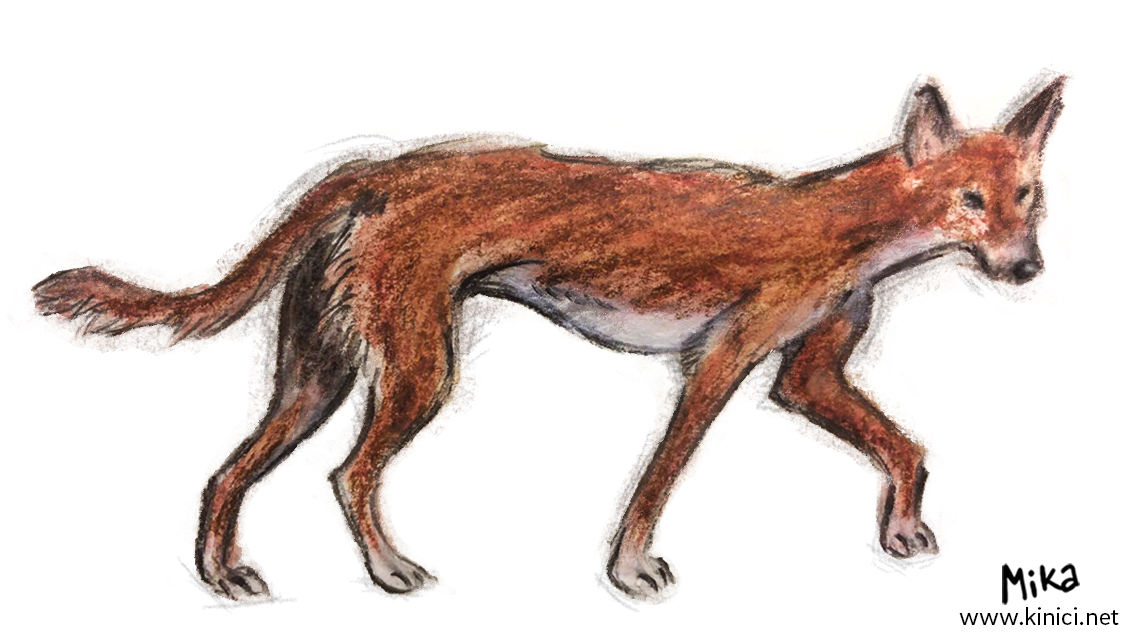 Kingdom: Animals (Animalia)
Kingdom: Animals (Animalia)
Phylum (Phulum): Chordates (Chordata)
Subphylum (Subphulum): Vertebrates (Vertebrata)
Class (Classa): Mammals (Mammalia)
Order (Ordo): Carnivores (Carnivora)
Family (Familia): Dogs (Canidae)
Genus (Genus): Canines (Canis)
Species (Species): Dingo (Canis lupus dingo)
Australian Wild Dog – Dingo, directly originates from prehistoric domestic dog, therefore, it is clear that its ancestor, same as in domestic dogs, is wolf. It lives in wilderness so successfully that it was just recently established that it was domestic dog first, which native Aborigines brought to Australia at least 4,000 years ago, but it is more possible that it has been living in the wild and not changing for last 8,000 years. Excluding ones that were mated with European dogs, it is probably the only purebred descendant of prehistoric domestic dogs in the world, which is why it should be treasured as a unique member of Australian animal kingdom. Yet Dingo is one step from becoming endangered.
Appearance
They are 50–60 cm tall. They most often weigh up to 20 kg, but they can go up to 35 kg. They are one meter and a half long. The fur is reddish brown and white on the legs and stomach. That kind of appearance is a perfect camouflage for sandy areas they inhabit. The eye of the Dingo resembles the eye of the wolf more than of the domestic dog.
Lifestyle
In some parts of Australia they live in packs, in others in smaller family groups. It mates once a year, same as wolf does.
Food
It feeds on different creatures, from tiny grasshoppers and lizards to huge preys like wild boars and kangaroos.
Habitat
It populates remote parts of Australia and deficient in vegetation, far away from cities. Habitats are cruel due to high temperatures during daytime which drastically drop in the evening.
